AESA PROGRAMMES
- Building R&D Infrastructure
- Developing Excellence in Leadership, Training and Science in Africa (DELTAS Africa)
- Human Heredity and Health in Africa (H3Africa)
- Africa’s Scientific Priorities (ASP)
- Innovation & Entrepreneurship
- Grand Challenges Africa
- Grand Challenges Innovation Network
- Rising Research Leaders/Post-Docs
- AESA RISE Postdoctoral Fellowship Programme
- African Postdoctoral Training Initiative (APTI)
- Climate Impact Research Capacity and Leadership Enhancement (CIRCLE)
- Climate Research for Development (CR4D)
- Future Leaders – African Independent Research (FLAIR)
- Critical Gaps In Science
- Clinical Trials Community (CTC)
- Community & Public Engagement
- Mobility Schemes: Africa-India Mobility Fund
- Mobility Schemes: Science and Language Mobility Scheme Africa
- Research Management Programme in Africa (ReMPro Africa)
- Science Communication/Africa Science Desk (ASD)
- Financial Governance: Global Grant Community (GGC)
- AAS Open Research
- CARI Programmes
- Evidence Leaders Africa (ELA)
Future Leaders – African Independent Research (FLAIR)
Future Leaders – African Independent Research (FLAIR) Fellowships are for talented African early career researchers who have the potential to become leaders in their field. These fellowships provide the opportunity to build an independent research career in a sub-Saharan African institution and to undertake cutting-edge scientific research that will address global challenges facing developing countries.
This is a partnership between The African Academy of Sciences (The AAS) and the Royal Society, supported by the Global Challenges Research Fund (GCRF).
- Support talented early career researchers to establish an independent research career in African institutions.
- Enable high-quality research that addresses the global development challenges faced by the African continent.
- Provide world-class support, training, mentoring and networking opportunities to benefit early career African researchers.
Applicants are encouraged to familiarise themselves with the GCRF research agenda and Global Sustainable Development Goals to ensure that their research aligns within the remit of these programmes.
You can apply for this scheme if you:
- Are a national of a sub-Saharan African country;
- Hold a PhD by the time you apply;
- Are an early career researcher with a minimum of two years of research experience since completing your PhD and no more than eight years of post-doctoral research experience;
- Wish to hold the fellowship in a research institution in an Official Development Assistance (ODA) eligible sub-Saharan African country;
- Have a clearly defined scientific research proposal focusing on one or more of the Global Challenge areas outlined in the scheme notes.
Research must be within the Royal Society’s remit of natural sciences, which includes but is not limited to biological research, chemistry, engineering, mathematics and physics. For a full list, please see the breakdown of subject groups and areas supported by the Royal Society. The Royal Society does not cover clinical medicine (such as patient orientated research and clinical trials), social sciences or humanities, other than when working in partnership with organisations.
Before applying, please ensure that you meet all the eligibility requirements, which are explained in the scheme notes.
This scheme provides an award of up to £150,000 per year for two years in the first instance, covering:
Research Fellow's salary, up to £45,000 per year.
Research expenses
- Research assistance
- Equipment costs
- Travel expenses
- Research consumables
Institutional overhead, up to £15,000 per year
The scheme also provides a programme of support and development, including:
- Mentoring
- Training courses
- Opportunities for international collaboration
- Networking opportunities regionally and internationally
Applications should be made through the Royal Society’s grant management system Flexi-Grant®.
Your application will follow the process detailed in the scheme notes, overseen by the FLAIR panel.
Interviews will be held the week commencing 18 November 2019 at the African Academy of Sciences, Nairobi, you are advised to keep this week free. You will be notified of the result of the application process by November 2019.
We are committed to supporting applicants with disabilities. If you require a reasonable adjustment during the application process, please contact the team at flair@royalsociety.org to let us know.
Meet the Team
Future Leaders – African Independent Research (FLAIR) Fellowships are for talented African early career researchers who have the potential to become leaders in their field. These fellowships provide the opportunity to build an independent research career in a sub-Saharan African institution and to undertake cutting-edge scientific research that will address global challenges facing developing countries.
 Anita Etale
Anita Etale South Africa
Project Title: Nanomaterial-enhanced biopolymers for low-cost water treatment (NanoBioPolymers)
Host Organisation: University of Witwatersrand, South Africa
Summary
Metal contamination of water resources presents a significant challenge to many nations in Africa, and the developing world. From Ghana and Nigeria in the west, to Kenya and the DRC in the East, to South Africa, and Zambia in the South, many low-income communities drink water contaminated by toxic levels of elements including mercury and arsenic. This has significant implications not just for the health and livelihoods of these populations. The work proposed here is driven by the need to increase access to safe drinking water for these communities.
Nanotechnology is the manipulation of materials at the nanometre scale (1-100 nm). It holds hope for novel water treatment technologies because materials at this scale exhibit properties extremely useful in water treatment. Some nano-enabled water treatment devices exist in the market. However, their costs are prohibitive, making them out of reach for consumers who need them most. Secondly, the synthetic polymers used to immobilise nanomaterials to prevent their loss to the water, are neither recyclable nor degradable, resulting in secondary pollution.
This project aims to create novel materials that are low-cost and therefore affordable to marginalised communities, as well as environmentally-friendly. By combining nanomaterials with polymers derived from waste materials, we aim to increase access to clean water by decreasing the cost of treatment. The materials will also be strategically designed to address both microbial and metal contaminants, and to be applied for both water treatment and pollutant sensing.
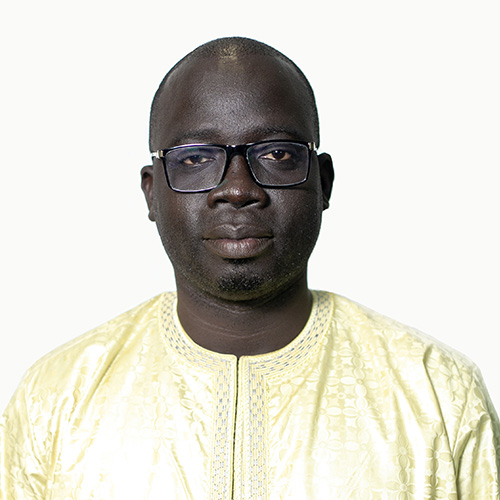 Balla D. Ngom
Balla D. Ngom Senegal
Project Title: Innovative Electrode Materials for Energy Storage Applications as Supercapacitors
Host Organisation: Universite Cheikh Anta Diop de Dakar, Senegal
Summary
Batteries currently support portable devices and the hybridization of vehicles due to their superior energy density. However, battery technology is severely limited when it comes to power density, showing strong capacity fading at high charge/discharge rates, as well as a limited cyclability. Supercapacitors, on the other hand, have excellent power rates and cyclability but suffer from much lower energy densities. For balancing of the electric grid to enable us to shift from fossil fuels to renewable energy from wind or sun, large-scale energy storage systems that can provide both the best possible energy and at the same time the best possible power performance are utterly needed, not the least in Africa and developing countries, but there is a void. The hybrid or asymmetric supercapacitor concept, combining battery and supercapacitor technology, has a true potential to fill this void. We here suggest a 2-years basic research project on novel materials forming the base for this kind of devices. We also stress the overall eco-friendliness by utilizing various biomass sources as starting materials.
The primary purpose here is indeed to develop a basic research effort on materials needed to bridge the gap between supercapacitors and batteries with regard to the energy and power performance by combining electrodes using traditional carbon-based approaches using novel architectures and incorporating 2D materials with novel electrolytes based on ionic liquids.
 Banothile Makhubela
Banothile Makhubela South Africa
Project Title: New metal catalysts for conversion of non-edible biomass and bio-sourced molecules to value-added liquid fuels and chemicals
Host Organisation: University of Johannesburg, South Africa
Summary
The purpose of the project is to design, prepare and characterise new base metal complexes and use these as catalysts for the conversion of biomass/bio-sourced molecules to liquid fuels and chemicals. These liquid fuels can be used as alternatives to burning of wood and charcoal for cooking and heating, and also as illuminating liquids.
The research will be delivered in 4 phases and the approach is to (i) use cheaper base metals (nickel, cobalt, copper, zinc and iron, produced in Southern Africa) instead of noble metals, to deliver efficient and affordable catalytic technologies and to (ii) exploit renewable biomass resources which, research shows, is widely available in Africa.
The catalyst design is such that it would be possible to (i) incorporate a second different metal into the structure of the complexes, so as to produce bi-functional hetero-bimetallic complexes as catalyst to potentially promote direct conversion of biomass to liquid fuels and (ii) heterogenise the metal complexes on a metal organic framework (MOFs) and/or on silica support to obtain more stable, robust and re-usable catalytic systems for sustainable reactions.
This research is expected to provide strategies for efficient bio-refinery and insight into how, the proposed, bio-refinery reactions work at a molecular level. Not only will this research address sustainability concerns, it will potentially also add value to biomass and mineral resources found in Africa, and lay a foundation for the stimulation, growth and formalisation of the bio-energy sector in the long-term.
 Cecil King’ongu
Cecil King’ongu Botswana
Project Title: Capacitive De-mineralization of Biodiesel: Towards less water and energy consumption and less wastewater generation in biodiesel refining
Host Organisation: Botswana International University of Science and Technology, Botswana
Summary
Africa has huge land cover and plant diversity that can be leveraged in climate change mitigation through adoption of renewable transport fuels such as biodiesel. However, while much has been achieved in terms of feedstocks and production parameters for biodiesel, great challenges still remain with regards to meeting European and American standards as far as the maximum residual limits of Na, K, Ca, and Mg metals are concerned. In biodiesel, these metals exist as ions originating from the catalysts, raw materials or drying agents used. These ions pose tremendous risks to the engines such as fuel system clogging, piston tear and wear, and engine knock among others. Traditionally, these ions are removed by washing the biodiesel with water. This method of biodiesel purification is problematic since copious amount of water is used that leads to serious wastewater management issues. Besides, it is difficult to attain the allowable limits for these ions in biodiesel by just washing. Additionally, a lot of time and energy is consumed during washing especially in mixing and separation. The proposed study seeks to employ, for the first time, capacitive demineralization of biodiesel. Interestingly, my expertise in supercapacitors and the unique advantages reported for capacitive deionization of brackish water such as easy regeneration, less energy consumption, high deionization efficiency, and amenability to continuous-flow operations are anticipated to translate to effective demineralization of biodiesel to European and American standards and thus accelerate the African governments’ acceptance of biodiesel use (pure or blended) in fuel stations.
 Christopher Trisos
Christopher Trisos South Africa
Project Title: Forecasting climate risks to biodiversity and ecosystem services to strengthen climate change adaptation in Africa
Host Organisation: University of Cape Town, South Africa
Summary
Africa is projected to have as many as 43 million more people pushed into extreme poverty due to climate change by 2030. There is therefore an urgent need to find successful strategies to help people adapt to adverse climate change impacts. One promising strategy is to use biodiversity and the services provided by natural ecosystems—e.g., flood protection from marshlands or water filtration from forests—to help people sustain their livelihoods despite climate change. However, we lack sufficient understanding of when biodiversity that underpins important ecosystem services may be adversely affected by climate change, and how this could then disrupt ecosystem service supply, making for a potentially risky adaptation strategy. My research will help better understand and map the relationships between biodiversity and multiple important ecosystem services, such as water and fuelwood availability, for people across Sub-Saharan Africa. I will also use data from climate models and information on species geographic ranges to forecast when in this century biodiversity and ecosystem service provision may be expected to face climate-induced disruptions. The results of my research will be shared online as free and interactive maps, providing new and essential information to policymakers and communities planning and implementing climate change adaptation strategies in Sub-Saharan Africa.
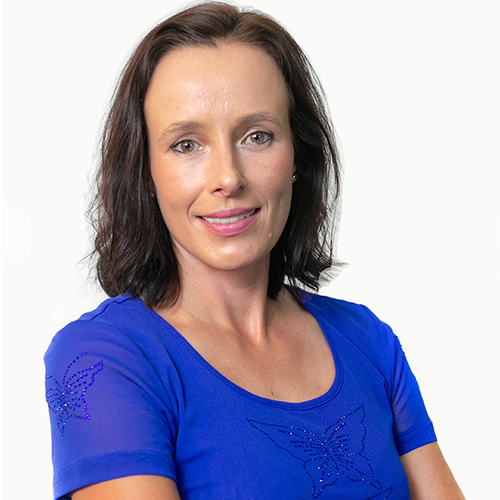 Debra Rossouw
Debra Rossouw South Africa
Project Title: Optimising ecosystems for industrial fermentation processes and wastewater remediation
Host Organisation: Stellenbosch University, South Africa
Summary
Studying microbial interactions, specifically those linked to direct physical contact, between different species of yeast, bacteria and algae may not seem very glamourous or important. However, understanding the molecular basis of such interactions is actually essential to our fundamental knowledge of microbial ecosystems, and our ability to harness/control them for human good, in the context of synthetic ecosystems. Synthetic ecology is the new frontier of synthetic biology, and, far from being scary science fiction, presents a very natural way for us to control and optimise microbial systems. Interaction science, in the context of synthetic ecology, is applicable to a wide range of seemingly unrelated fields, including medical microbiology, food and beverage biotechnology, biofuel production and wastewater remediation. My preliminary research has shown that cell wall-based interactions between different species of yeast, for instance, is highly organised and specific, and has a pronounced impact on the survival (or not) of the different species involved in complex engineered ecosystems. Here we propose to further investigate how modifications to yeast cell walls influence the way they aggregate and interact with bacteria and microalgae. These interactions will be investigated in the context of obligate synthetic ecosystems, using directed evolution as an additional research tool. Our aim will be to optimise yeast-microalgae pairings (‘micro-lichens’) for wastewater remediation, and yeast-bacteria pairings for food and beverage production. Taken together, synthetic biology and interaction science are clearly important areas of science worth investing in for a sustainable future.
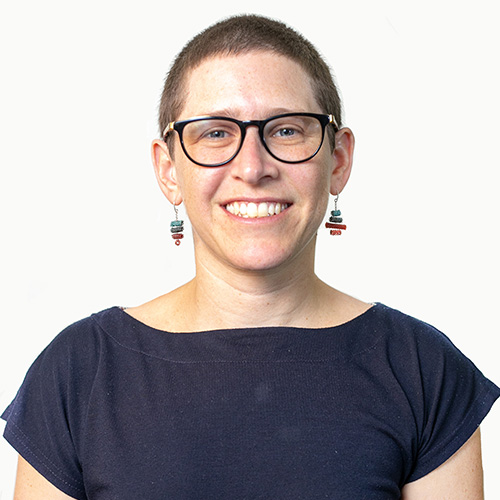 Dorit Hockman
Dorit Hockman South Africa
Project Title: Exploring the gene regulatory dynamics of the maturing human brain
Host Organisation: University of Cape Town, South Africa
Summary
Our brains consist of many different cell types. The DNA in each of these cells is an instruction booklet providing directions for which genes must be activated to ensure each cell type is working properly. As our brains mature, different genetic instructions are being activated and turned off. Also, when the brain is challenged by infections, the cells activate specific genes in response to the disease. In developing countries, such as South Africa, diseases that affect the brain are a serious concern. Diseases like tuberculosis (TB) commonly affect the brains of children and often result in death. Understanding how our brain cells respond to infection will help us develop treatments that cater to each patient’s specific genetic response. However, to do this, we first need to know how the brain functions normally. I am proposing to analyse the genes that are activated in brain cells that have not been challenged by infection. The brain tissue will come from donors who are undergoing necessary surgery at local hospitals. I will determine which genes are being activated, how they are being switched on and off and how the pattern of activation changes when brain cells from children are compared to adults. It is important that this information comes from the local population because, in the future, we will be able to compare our findings to similar research done on brain cells from local children who have TB. We will then be able to use this information to provide more effective disease treatment.
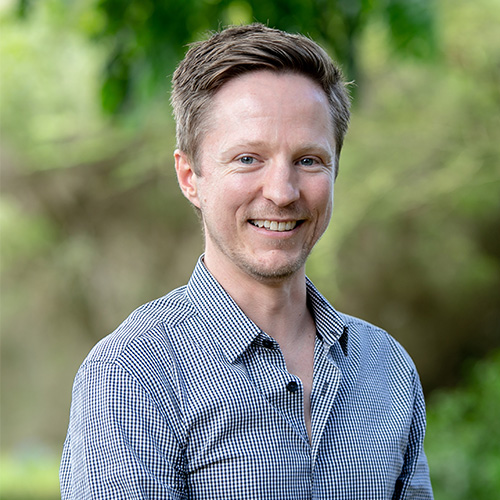 Dyllon Randall
Dyllon Randall South Africa
Project Title: Re-thinking sanitation by upcycling urine for societal and economic benefit
Host Organisation: University of Cape Town, South Africa
Summary
Since most African countries are still in the developing phase, it would be beneficial for them, and the world, if sanitation services are implemented while being mindful of sustainability and resource recovery from "waste". If these systems are installed based on past designs, Africa would be repeating the same mistakes currently facing many developed countries. For example, optimizing existing urban wastewater treatment infrastructure, as important as it is, is not ultimately going to reduce the thirst for water and stem the hunger for resources of burgeoning cities in a water and resource scarce future. The longer we accept business as usual with our current urban water cycle, the more the window of opportunity of making a significant impact decreases. The collection of urine from toilets or urinals would allow us to recover valuable resources (such as fertilizers) from something that is often considered a "waste". In addition, novel fertilizer-producing urinals could significantly reduce the volume of water individuals use on a daily basis. This project aims to disrupt the sanitation sector by producing novel sanitation systems to transform collected urine into many useful products. This work is particularly exciting because it has the ability to transform our view of "waste" while helping create a green and circular economy. For example, imagine office blocks becoming mini-fertilizer producing plants, treating urine on-site while also creating an economic incentive to do this. The benefits to society would be substantial, whereby sustainable and resilient cities of the future would be created.
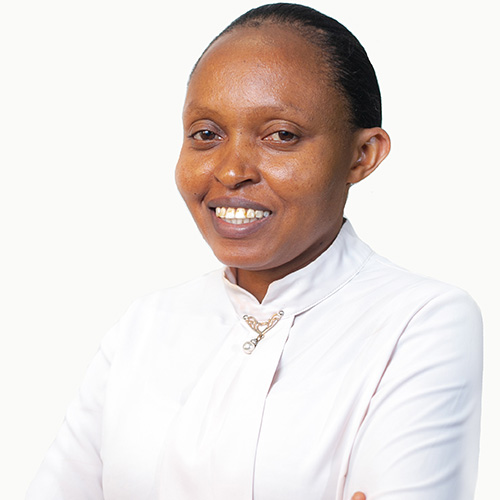 Elizabeth Ndunda
Elizabeth Ndunda Kenya
Project Title: Towards real-time in-situ determination of polychlorinated biphenyls using molecularly imprinted polymers-based sensors
Host Organisation: Machakos University, Kenya
Summary
Pollution of our environment is one of the emerging challenges in the developing countries, due to poor enforcement of environmental regulations. As a result human being and animals are exposed to these pollutants, thus threatening their health. Some of the pollutants of concern are polychlorinated biphenyls (PCBs), since they are classified as ‘probable human carcinogens’. They are also known to bio-accumulate in fatty tissues of animals and humans, reaching toxic levels upon continued exposure. Techniques that can achieve trace to ultra-trace level detection of these compounds in the environment are therefore necessary to protect the environment and humans from exposure to these chemicals. On this note, the proposed research seeks to come up with a sensor to enable real – time detection of environmental PCBs, so as facilitate continuous monitoring in order to provide timely information on any possible contamination of our environment with these compounds. Adoption of this sensor for continuous monitoring of the PCBs in the environment will see increased protection of our population and contribute to a healthy workforce.
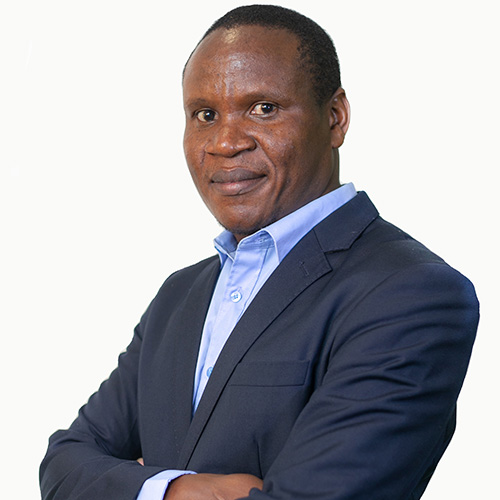 Ezekiel Mugendi Njeru
Ezekiel Mugendi Njeru Kenya
Project Title: Using root-associated microorganisms to enhance sustainable crop production and resilience of smallholder agroecosystems to climate change
Host Organisation: Kenyatta University, Kenya
Summary
Agriculture today faces an unprecedented challenge of producing sufficient and healthy food for the rising human population under limited resources and changing climate. To increase agricultural sustainability and conserve agroecosystems, the search for alternative soil amendment strategies that capitalize on biological processes is gaining pace. These include beneficial root- associated microorganisms better known for their critical roles in improving crop nutritional uptake and resistance to biotic and abiotic stresses. Since most smallholder farmers in semi-arid tropics of Kenya cannot afford inorganic fertilizers, the implementation of low-cost and sustainable fertilization strategies that promote productive and resilient cropping systems is imperative. This project aims to identify beneficial root-associated microorganisms that promote crop production and agroecosystem resilience to climate change. Using a multidisciplinary approach, rhizopheric soil and root samples will be collected from Embu, Kitui and Tharaka Nithi Counties of Kenya. A polyphasic approach including morphological, biochemical and molecular methods will be used to identify and map the biodiversity patterns of the native root-associated microorganisms. The isolates will be screened for production of beneficial plant growth metabolites in vitro. Effective native isolates that promote crop production, drought tolerance and quality will be identified using greenhouse bioassays, multiplied and supplied to smallholder farmers. Furthermore, field experiments will be established through participatory research and used for on-farm assessment of prepared low-cost microbial inocula. It is envisaged that the effective low-cost inocula, will be widely adopted by farmers and used to promote sustainable food production, cash generation and resilience of smallholder agroecosystems to changing climate.
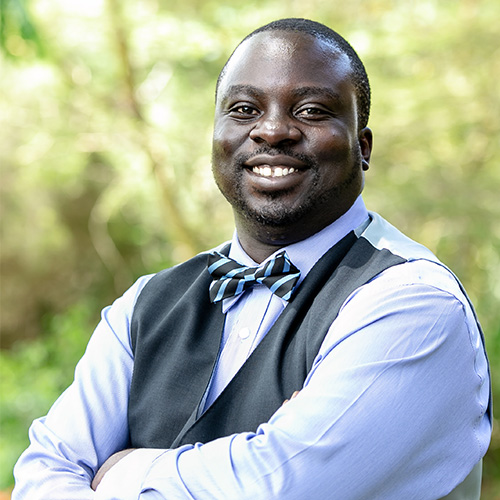 Francis Wamonje
Francis Wamonje Kenya
Project Title: Virus versus virus: 'Plant-vectored' viruses as bio-pesticides against insects and insect-transmitted plant viruses
Host Organisation: International Centre of Insect Physiology and Ecology (ICIPE), Kenya
Summary
Aphids and related insects are important plant pests for two reasons: they directly damage many crops and they transmit most plant viruses. For many farmers in sub-Saharan Africa, insecticides are either too expensive or unavailable, and aphid populations are very high, especially in warmer regions. For these reasons, new, inexpensive and sustainable control methods are vitally important. Can ‘good viruses’ such as insect-infecting dicistroviruses help? Dicistroviruses are remarkable in that they use plants as infection 'reservoirs' - these viruses do not reproduce or cause disease in plants but insects that feed on these reservoir plants will become infected and can become diseased and die. We believe that dicistroviruses have important potential as biological control agents that would limit direct insect damage and inhibit transmission of crop-infecting viruses. We propose to use next-generation sequencing, a state-of-the-art genetic 'fingerprinting' technique, to discover the variety of insect-infecting dicistroviruses that use crop plants as reservoirs and identify the aphid pests they infect. We shall characterise pure strains of the dicistroviruses under laboratory conditions to facilitate basic research to understand the effects of the dicistroviruses viruses on aphid survival, their feeding behaviour on plants, and on the ability of these insects to transmit crop-infecting viruses. This will enable us to identify insect-infecting viruses with potential as practical biocontrol agents to protect crops against these insects and inhibit the spread of crop-destroying viruses. This research supports Sustainable Development Goals 1-3 by benefiting smallholder incomes, food security and economic development of people in developing countries of Africa.
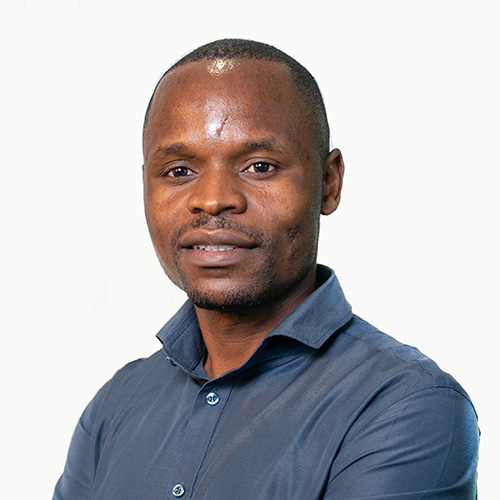 Gift Mehlana
Gift Mehlana Zimbabwe
Project Title: Design and Synthesis of Metal-Organic Frameworks for Catalytic Coversion of Carbon Dioxide to High Value Chemicals
Host Organisation: Midlands State University, Zimbabwe
Summary
Carbon dioxide emissions from various sources is the greenhouse gas causing the greatest environmental concerns. The increase of these emissions originates from the burning of coal, oil and natural gas. To date, many protocols have been proposed and developed to solve the problems associated with the emission of carbon dioxide. Clean energy technologies provide solutions, however, large scale industrial implementation is not enough to change the energy consumption structures globally in a short period of time. It is therefore imperative to develop technologies that can efficiently capture carbon dioxide from existing emissions to address global challenge area number 7. Our aim is to develop methods that are efficient in converting carbon dioxide to chemicals that can be used for other applications in the industry and this directly addresses global challenge area number 9. These methods should be able to operate at low temperature and pressure unlike the existing methods which require extremely harsh conditions. Not only will this address global environmental concerns, scenarios inevitably more threatening to low and middle income countries, but it will also provide organic starting materials for the chemical industry in countries devoid of fossil oil resources. In addition, industrial symbiosis in envisaged with for example the cement industry. This industry is responsible for 5% of global anthropogenic carbon dioxide emissions but at the same time implementable in economic development in sub-Saharan Africa.It is interesting to note that the formates generated from the catalytic hydrogenation of carbon dioxide can be utilised to generate more MOF catalyst.
 Joseph Raimondo
Joseph Raimondo South Africa
Project Title: Human cell-type specific ion dynamics in neuroinflammation and seizures
Host Organisation: University of Cape Town, South Africa
Summary
Ion gradients are a fundamental component of the nervous system. They are established by ion pumps, transporters and channels within cell membranes. Ion regulatory mechanisms often differ between cell types and changes in intracellular ion concentration have been implicated in multiple disease processes in the brain, with epilepsy being a prime example. This proposal focuses upon two key ions: chloride and hydrogen, which can exhibit intracellular changes over a range of timescales that have been linked to the development of epileptic seizures. Epilepsy is a debilitating disease which negatively impacts the health and wellbeing of approximately 50 million people worldwide. Epilepsy is especially common in Africa where most cases result from brain inflammation caused by head injuries or infection. How brain inflammation affects chloride and hydrogen ion gradients, and hence susceptibility to seizures is not known. To shed light on this important area, we will capitalise upon methods I have helped develop for directly measuring and manipulating ion concentrations within the nervous system. We will prepare human brain slice cultures from brain tissue, which has been resected during neurosurgical procedures and donated to a tissue bank. Utilising this valuable tissue we will measure and manipulate ion dynamics during brain inflammation using optical reporters and light-activated proteins. This research will determine how brain inflammation affects seizure development by modifying the concentration of chloride and hydrogen ions within brain cells. Our findings have the potential to inform the development of new treatments for epilepsy.
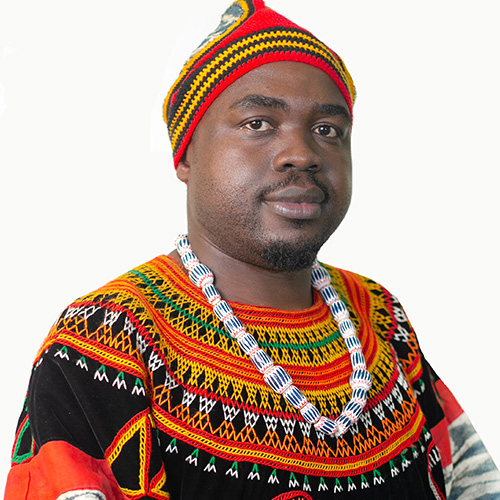 Justin Komguep Nono
Justin Komguep Nono South Africa
Project Title: Identification of host-dependent molecular and microbial determinants of schistosomiasis transmission and burden
Host Organisation: Institute of Medical Research and Medicinal Plants Studies (IMPM), Cameroon
Summary
Schistosomiasis has "incapacitated" millions and killed hundreds of thousands annually for centuries, particularly in Africa, and continues to do so. It remains a public health and poverty-promoting concern for mankind as it causes pain, anemia, fatigue, impaired cognition, tissue fibrosis and ultimately death. There is no vaccine against the disease and the only available drug, praziquantel, does not prevent reinfection or fully reverse the associated tissue pathology. Therefore, the world health organization advocates for the development of adjunct strategies to end the disease transmission and stop the burden associated with this disease. This project will screen children samples from schistosomiasis endemic area in rural Cameroon provided with infection status and liver fibrosis scores. We will assess the genetic make-up and the microbes present in the children intestines by means of molecular analysis of the blood and stool samples, respectively. Particularities in the genetic make-up and / or the gut microbes of protected versus susceptible children will be determined. These particularities could then be tested as targets to end schistosomiasis reinfection and/or pathology.
This work reveals how powerful immunoparasitological studies are in general as a mean to solve major health thus societal and economic problems. It also stresses the relevance of our evolving line of investigation to combat schistosomiasis, as it proposes to assist the change of narrative from control to sustainable elimination of the disease.
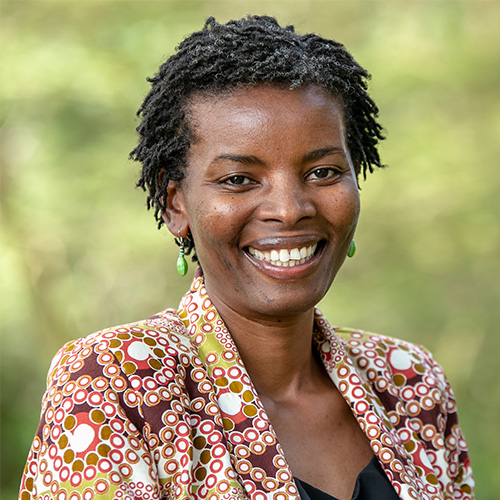 Kanyiva Muindi
Kanyiva Muindi Kenya
Project Title: Tackling household air pollution in rural Kenya
Host Organisation: African Population and Health Research Centre (APHRC), Kenya
Summary
The proposed work will look at the possible shift in fuels used for cooking in a rural community, from wood to ethanol with the aim to protect the health of women and young girls who are most times the cooks for their families. Many homes in Kenya and in Africa have been using wood as the main fuel for cooking and heating, but research has shown that this has negative impacts on the health of people. In addition Kenya has been facing declining forest cover due to over-harvesting of trees for wood and charcoal among other uses. An alternative fuel like ethanol is clean and if taken up by many households, the effects on health arising from wood would be eliminated. There are also business opportunities for women who can sell ethanol to other users in their neighborhoods. Women will also have more time which can be used for productive efforts because they do not have to go looking for ethanol like they do with wood. This study is important because it provides households with the opportunity to shift to clean fuels and therefore protect the health of women and children. It also fits with the government's aim of having all homes in the country use clean fuels and lastly it will contribute towards protecting the environment by reducing demand for wood and charcoal and cutting down the production of pollutants that lead to climate change. The project's findings can be applied to other countries in Africa with similar challenges.
 Lenine Liebenberg
Lenine Liebenberg South Africa
Project Title: The effects of recent sex on the genital immune environment
Host Organisation: Centre for the AIDS Programme of Research in South Africa (CAPRISA), South Africa
Summary
Infection of sexually-transmitted human immunodeficiency virus (HIV) is aided by breaks in the genital mucosal barrier and by access to local cellular targets for infection. Recent evidence highlights the importance of genital inflammation in undermining the protective effect of pre-exposure prophylaxis (PrEP); and underscores the need for determining the causes of genital inflammation and, ultimately, limiting their effect on the mucosal barrier and access to local cellular targets for HIV infection.
Semen contains several factors known to modulate the immune environment of the female genital mucosa in order to facilitate conception, and these may contribute to HIV risk. In this project, the genital microbiome, and biomarkers of inflammation, will be assessed in the context of recent sex, (i) in genital specimens of both male and female partners of a monogamous couple, and (ii) on in vitro simulation of unprotected sex with the primary or new partners. This project therefore proposes to improve the understanding of the peri-coital immune milieu, its persistence over time, and the contribution of having multiple sexual partners; with each concept relevant to the design of effective methods to limit HIV infection in women.
Based in the province with the highest incidence of HIV in my country, I am driven by a passion to understand and control the biological factors that increase women's risk of HIV infection. I am motivated by the prospect of this work promoting male involvement in clinics/clinical trials, as male immunology in this context is, inconceivably, a niche area in basic science research.
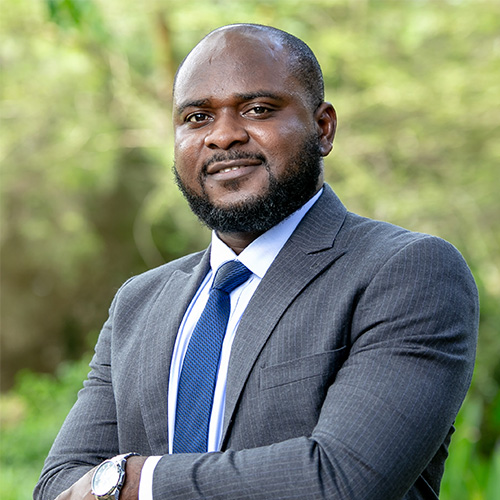 Leopold Tientcheu Djomkam
Leopold Tientcheu Djomkam Gambia
Project Title: Interrogating Mycobacterium tuberculosis complex host immune responses to inform host-directed therapeutics development in West Africa
Host Organisation: MRC Unit The Gambia at LSHTM, The Gambia
Summary
In West Africa half of all Tuberculosis (TB) is caused by a type of bacteria called “M. africanum”, which is different from the commonly known M. tuberculosis worldwide. Our previous studies in The Gambia have shown that patients who developed disease from M. africanum still look sick after completing treatment compared to those who had TB from the well-known M. tuberculosis. This result implies that M. africanum may need additional treatment support to fully recover after treatment.
However, TB treatment requires 6 months minimum in general and is the same for both patients groups. One promising strategy to reduce this long treatment is using drugs that target the patients' immunity rather than their bacteria, which sometimes develop resistance. These modulators stimulate the immunity of patients such that they can clear the bacteria faster when taking antibiotics. My research aims to exploit the differences in the response to this two bacteria M. africanum and M. tuberculosis in well-known Gambian patients in order to identify new targets for immunomodulators in this population. If successfully identified, drugs will be made against these targets to shorten the length of treatment in West African countries, which have the similar bacteria found in The Gambia. A shorter treatment will improve the lives of patients who return to work quicker. Since this approach accounts for regional diversity, it can be applied in other locations and the results compared, thus adding to the toolbox to achieve the elimination of TB as a global health threat by 2050.
 Margreth Tadie
Margreth Tadie South Africa
Project Title: Development of an integrated approach to sustainable mitigation of the impact of mine tailings
Host Organisation: Stellenbosch University, South Africa
Summary
This research project addresses the concerns around sustainability in mining. Mining activities are significant to developing economies and provide job opportunities for poor communities. The increase in technologies has increased the demand for metals, making mines economic centres. The problem however is that poverty and low quality of life are still a problem in developing countries. This is despite having large amounts of mineral resources which are yet to be mined and which have been mined and discarded.
The consequences of mining to people and to the environment are easily seen in large mountains of waste which are left behind. These release contaminants into waterways and rivers and cover the surrounding terrain with dust due to wind action. Communities who live in these areas rely on agriculture, livestock and cultivation to survive. Not only is their health threatened but their livelihoods are also at threat. This significantly slows down development, socially and economically.
It is possible to come up with ways to reduce the negative effects of mine waste in these communities and at the same time recover some economic value, which can finance this and provide jobs. This project is about recovering minerals which are hard to recover from waste and doing it in such a way that the people most affected can recover their land and gain some economic value. By developing a set of guidelines for processing and reducing the impact of mining waste this project will equip the relevant people concerned to manage resources more effectively.
 Marique Aucamp
Marique Aucamp South Africa
Project Title: Taste masking of selected antiretroviral drugs through microencapsulation using proteins and polysaccharides for paediatric dosage form formulation application
Host Organisation: University of the Western Cape, South Africa
Summary
It is estimated that over 1.8 million children are living with HIV (human immunodeficiency virus), with the majority residing in Sub-Saharan Africa. According to a 2017 Paediatric ARV Drug Optimization Review from the World Health Organization (WHO), poor adherence to treatment can be mainly ascribed to the lack of child-friendly formulations. Child-friendly formulations posses sufficient palatability, swallowability and dispensability. The biggest challenges with formulating child-friendly ARV products are that ARVs are extremely bitter tasting. Taste masking is problematic, even sweet-tasting liquid formulations still have bitter after tastes. Liquid formulations are also very bulky and cannot be transported and stored easily. If container breakage occur the whole/partial prescribed ARV supply is lost. Granules, in the form of sprinkles have been investigated as a solution. This allow the drugs to be mixed with food or drink, however once the sprinkles start to dissolve the bitter taste is also released. This project will aim to microencapsulate the ARV drugs through forming a capsule wall that is insoluble in food and drink (juice or milk). Non-allergenic proteins will be used as wall formers whilst a natural sugar will be used as a drug containing matrix. Allowing the formulation of a palatable, swallowable, easily dispensable/administrable product containing ARV drugs. More importantly, these microcapsules will be formulated using natural, non-allergenic, sustainable, cost-effective ingredients. The success of this research will assist Africa in the treatment of its future, namely its children and will positively impact the sustainable and affordable global health challenge.
 Martin Rono
Martin Rono Kenya
Project Title: Genomic and transcriptional analysis of malaria parasites from controlled human malaria infection of Kenyan adults with varying exposure to malaria
Host Organisation: Kenya Medical Research Institute (KEMRI), Kenya
Summary
Falciparum malaria remains a major life-threatening disease in children aged under 5 years in sub Saharan Africa. Naturally acquired immunity to malaria develops after repeated exposure to malaria and can both limit parasite growth and prevent parasites from causing disease. This has a major impact, reducing severe forms of the disease associated with high parasite counts and increasing asymptomatic infections associated with low parasite counts. While this process is well-known, the parasite molecules that are targeted to generate immunity in adults are not - identifying them is crucial to finding long-term solutions to combat malaria. I have previously conducted population-level comparisons of falciparum parasites sampled from human populations with high levels of immunity versus human populations with low levels of immunity and found variation in P. falciparum gene regulation. Here I propose to use a recently established human malaria infection model in Kenya to investigate how the parasite gene expression pattern varies in the face of differing levels of human immunity. This system gives a unique opportunity to study these questions in a much more controlled manner, and I will use genomics and microarrays to characterize the changes that occur to the parasites genome and transcriptome in the face of varying host genetic and immune pressure during in vivo development. This will determine mechanisms of parasite adaptation to host immunity and identify parasite molecules with potential for vaccine development.
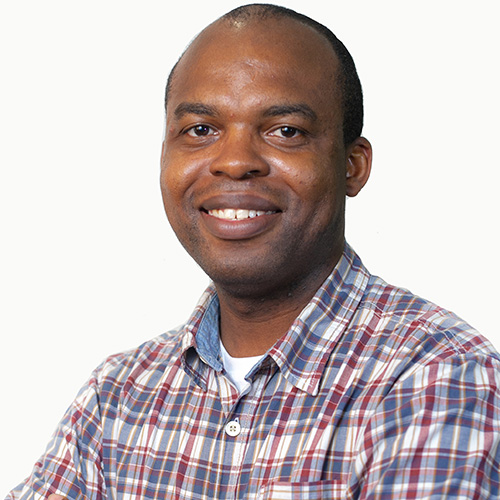 Oluwaseyi Shorinola
Oluwaseyi Shorinola Kenya
Project Title: Rapid mining and mobilisation of beneficial gene alleles to improve wheat production in East Africa
Host Organisation: International Livestock Research Institute (ILRI), Kenya
Summary
The food security challenge anticipated in Africa in the near future is clear: in less than four decades from now, Africa must feed an additional 1.3 billion people more than half of whom will be living in urban areas. Wheat will play a critical role in ensuring food security in Africa as increases in urbanisation has triggered changes in food consumption patterns with a shift from traditional food to easy-to-cook foods that are mostly derived from wheat. Africa demands for wheat more than for any other crop, but only produces less than half of the wheat it consumes. Wheat production in Africa is currently characterised by low yields, high susceptibility to diseases, and poor end-use quality mainly due to the use of poor quality seed with low genetic potential. A preliminary study that characterised 250 wheat cultivars from Kenya and Ethiopia uncovered a gap in the genetic potential currently exploited for wheat improvement in East Africa and showed surprisingly low frequencies of some major genes controlling important agronomic trait in wheat. I propose a low-risk, high-reward and excellent scientific approach to mobilise, evaluate and discover beneficial genetic variation to improve wheat production in East Africa. In the project, I will rapidly mobilise five major beneficial genes to improve yield (TaCKX-D1, TaGW2), protein content (Gpc-B1), and disease resistance (Yr5 and Yr15) in East Africa wheat population, evaluate the effect of these genes in the field and discover new gene alleles for future wheat improvement.
 Raphael Tshimanga
Raphael Tshimanga Democratic Republic of the Congo
Project Title: Developing a framework of catchments classification for hydrological predictions and water resources management in ungauged basin of the Congo River
Host Organisation: Universite de Kinshasa, The Democratic Republic of Congo
Summary
The Congo basin provides multiple goods and services that include hydro-power, water supply, fisheries, agriculture, transportation, and maintenance of aquatic ecosystems, all of which attract multiple (post-conflict) large scale investment projects. Beside these potentials offered by the basin, a challenge remains undaunted, that of a critical lack of reliable information to enable rational planning and wise decisions on how best to invest funds on post-war reconstruction and ensure climate resilient development in the basin. Water resources management needs in the Congo basin include the quantification of current and future supplies and demands that encompass the impacts of future changes associated with climate and land use, but it is difficult to achieve these needs in the absence of reliable information over appropriate spatial and temporal scales. Catchment classification systems are therefore critical to understanding water resource processes, structures and functions, and to enable management and conservation strategies. The main objective of this study is to develop a framework of catchment classification for the Congo River basin necessary to enable guidance for water resources planning and management practices. The impact of such a framework is wide as it will contribute to the implementation of many other projects of water resources planning and development whose feasibility has been challenged by a lack of adequate baseline information. It will also contribute to efficiency of investments for water resources development, avoid redundancy of actions and maximise socio-economic benefit.
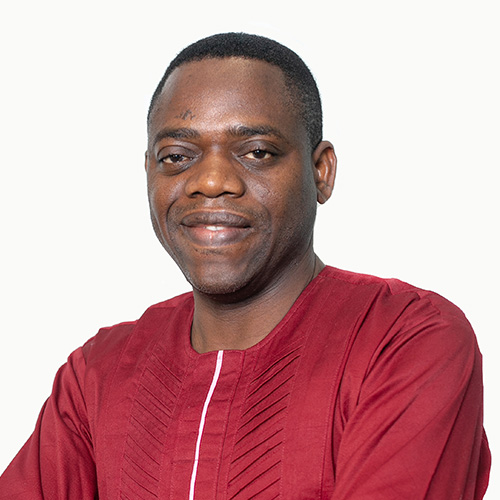 Rufus Akinyemi
Rufus Akinyemi Nigeria
Project Title: African Innovative Genetics of Vascular Cognitive Impairment Study
Host Organisation: University of Ibadan, Nigeria
Summary
Memory difficulties and dementia are huge problems affecting many people in our world today with a lot of personal, social and economic implications. By the year 2050, nearly 75 million people worldwide will be living with dementia, majority of whom will be in developing countries including those of Africa. Stroke is a leading cause of dementia and it has been projected that 1 out of every 3 persons over a lifetime will develop either a stroke or dementia or both. This portends great danger particularly for the African continent where the highest rates of stroke have been reported in recent times, and people of African descent are particularly prone to worse outcomes, including memory problems which may be due to factors in our genes or in our environment. But very little is yet known about how genes contribute to the evolution of memory problems following stroke. The goal of my research is to discover new genes that contribute to the development of memory problems related to stroke, particularly in people of African origin. We also want to strengthen our capacity and acquire necessary equipment that will enable us domesticate the special type of genomic analysis required to make these novel discoveries in Africa. Knowing these genes and how they work will help scientists develop new methods of detecting memory problems early, develop new treatments and better strategies to prevent them. This research will make a difference to the lives of people of Africa and indeed the entire world.
 Robert Skelton
Robert Skelton South Africa
Project Title: Scaling from plant hydraulics to water management in diverse plant communities
Host Organisation: South African Environmental Observation Network (SAEON), South Africa
Summary
Sub-Saharahan Africa is one of the regions most vulnerable to drought and incremental warming. Climate change threatens water availability and important sectors that rely on natural ecosystems, such as forestry and tourism. This project aims to reduce uncertainty surrounding the capacity of natural ecosystems to withstand climate change by developing new fundamental insights in the biological sciences, thereby improving predictions of the ecological impacts of drought. One important expected outcome is a quantitative assessment to show how drought-induced changes to plant functionality in canopies affect long-term plant performance and viability – reducing uncertainty over the capacity of natural ecosystems to cope with water stress, and enabling more accurate and reliable predictions of plant health and productivity. The potential scientific, economic, and ecological benefits for South African communities are considerable. The development of innovative technologies to monitor plant health – including miniature external sapflow gauges – may well lead to new commercial products. This project is perfectly aligned with South Africa's research priorities in areas of long-term environmental change, for enduring scientific and societal benefit.
 Sarah Fawcett
Sarah Fawcett South Africa
Project Title: The role of marine ecosystems in improving water quality in rapidly urbanizing coastal regions
Host Organisation: University of Cape Town, South Africa
Summary
Coastal regions that are home to large human populations are subject to significant pressures such as pollution, habitat destruction, resource depletion (e.g., overfishing), and climate change. They also support the livelihoods of millions of people through subsistence fishing, seafood harvesting, and tourism. In many urbanized coastal regions in sub-Saharan Africa population growth is rapid as people seek opportunities near cities. A persistent problem associated with this is a decrease in coastal water quality due to pollution from sewage, agriculture (e.g., pesticides and fertilizers), and industry. My project is aimed at identifying and tracking the sources of pollution to rapidly urbanizing coastal regions. The methods that I plan to use could be applied to many such regions in Africa, but I am using as a model South Africa’s largest natural bay, False Bay, which is popular with fishers, divers, and recreational beach users. I am also interested in understanding how mussels, the most abundant marine organisms in the intertidal zone, help to remove pollutants that run into the bay from land, thereby purifying the water. I aim to use the lessons learnt to develop fast and simple ways of communicating the state of the bay’s water quality (e.g., good, poor) to people who rely on it for food. In this way, my work will help people make safer decisions about the food they harvest. In addition, information from the project will help government decide where to locate Marine Protected Areas designed to preserve our shared environment and protect our natural resources.
 Veron Ramsuran
Veron Ramsuran South Africa
Project Title: Examining the role genetic and epigenetic host factors have on HIV disease
Host Organisation: University of KwaZulu-Natal, South Africa
Summary
Differences exist whether an individual gets infected with HIV or how rapidly they progress with the disease. The genetic makeup of a person plays a major role in determining which people get infected and how fast they progress to AIDS. Specific immune genes, responsible for presenting pieces of a pathogen to the immune system, were shown to vary in expression. The expression of these genes, Human Leucocyte Antigen (HLA), were also shown to control HIV progression to AIDS. Determining the molecules that control the expression of the HLA genes serve as important sites for designing new drug target sites. My research focuses on identifying factors that control expression of HLA genes and determining if altering these pathways could lead to better HIV outcomes. The excitement and importance stems from using this knowledge to develop new treatment strategies against HIV. My research has wide implications for individuals infected with HIV and researchers studying the disease. My recent work identified a biomarker for HIV progression, within South Africa ~2 million people infected with HIV have this genetic makeup. Identifying more biomarkers within disease burden populations, such as sub-Saharan Africa, will allow us to determine which individuals will progress faster to AIDS. Furthermore, research that identifies factors that control expression of these markers could prove as valuable drug target sites that directly affect the high burdened populations.
 Wade Petersen
Wade Petersen South Africa
Project Title: Environmentally Friendly Strategies for the Enantioselective Synthesis of Biologically Important Hetero-Spirocyclic Scaffolds
Host Organisation: University of Cape Town, South Africa
Summary
“The universe is disymmetric”. This quote by Pasteur refers to the inescapable consequence of the 3-dimensional nature of our world. Thus, the overwhelming majority of natural product/organic molecules made by nature or by chemists are dissymmetric, or in chemistry terms, the molecules are chiral, existing as “left-handed” or “right-handed” structures that are non-superimposable mirror images of each other, known as enantiomers. This is much like our left and right hands which, although resembling each other, often display very different properties and capabilities, particularly in the way they interact with other chiral objects (such as gloves). For this reason it is absolutely essential that organic chemists are able to selectively prepare one enantiomer over the other in order to promote or suppress various properties, depending on the application.
This proposal therefore aims to generate a range of spirocyclic oxindoles, a ubiquitous structural motif found in naturally occurring compounds. Importantly, the aim is to carry out this new chemistry enantioselectively in order to selectively access one enantiomer over the other. Taking inspiration from nature’s ability to use organic molecules catalytically as well as light as an energy source for the synthesis of complex organic molecules, the proposed research will centre around the use of small molecules (organocatalysis) and light energy (photoredox catalysis) to achieve its overall aims. The novel compounds prepared will be submitted for biological investigation, in a range of high throughput enzyme assays and focused on drugs to treat the African disease burden such as malaria, tuberculosis and HIV.
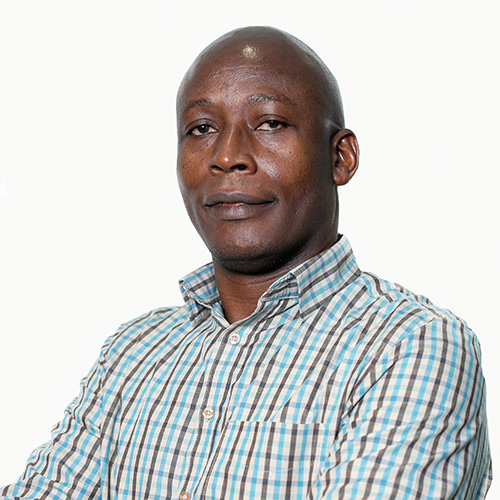 Wilfred Odadi
Wilfred Odadi Kenya
Project Title: Evaluating land sharing schemes between communal and private ranches, and grazing intensity effects on biodiversity and livestock in Laikipia, Kenya
Host Organisation: Egerton University, Kenya
Summary
Implementing appropriate grazing management practices in the world's grazing lands is vital for ensuring biodiversity conservation, sustainable livestock production and human well-being. In many parts of Africa's grazing lands, private ranchers often lease part of their land to neighbouring pastoral communities with a view to helping cushion the pastoralists from livestock losses during dry periods. Such land sharing schemes are also intended to reduce grazing pressure and trigger recovery of degraded communal grazing lands. However, little is known on how these schemes operate and their impacts on pastoralists and the environment. In addition, influx of pastoralists' livestock into private ranches, which also serve as refuge areas for wildlife, effectively increases grazing pressure in these areas. However, the effects of altered grazing intensity on wildlife and livestock have rarely been quantified in these landscapes. The proposed study seeks to analyse how the land sharing schemes between pastoralists and private ranchers work, their ecological and social impacts, and challenges faced in their implementation in Laikipa landscape, Kenya. In addition, the proposed study seeks to assess biodiversity and livestock responses to changing grazing intensity, with a view to determining optimal grazing intensity levels for biodiversity conservation and livestock production in such landscapes. The findings of the proposed research could contribute towards enhanced coexistence of wildlife, livestock and people, with desirable implications for Africa and its people. At the global scale, the findings of the proposed study will contribute towards ensuring sustainable economies and societies.
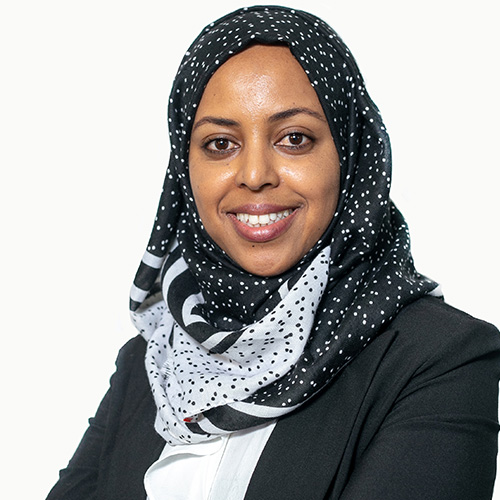 Zebib Yenus Nuru
Zebib Yenus Nuru South Africa
Project Title: Cost effective nicr-ni2o3 solar absorber coatings by green synthesis for milk pasteurization in low income rural farming
Host Organisation: Adigrat University, Ethiopia
Summary
The world in general and Africa in particular uses its energy from fossil fuels such as coal, gas and oil, which are non-renewable. However these fossil fuels generate green house gas, which is the major factor responsible for global warming. This environmental problem and the ever increasing demand of energy motivated researchers to look for an alternative energy, which is renewable. The sun, one of the renewable sources, is the vast majority of energy used by people on earth. Africa in general and the southern Africa in particular have sunshine all year round. The annual 24-hour global solar radiation average is about 220 W/m2 for South Africa compared with about 150 W/m2 for USA, and about 100 W/m2 for Europe and the United Kingdom. This makes South Africa's local resource one of the highest in the world. However, the conversion of solar energy to heat or electricity is insignificant. To harness this inexhaustible energy, solar thermal systems are the most important candidates. The critical part of these systems is the absorber surface. To increase the photo-thermal conversion efficiency, the solar absorber surface should capture maximum solar radiation in the solar region and should emit low in the infrared region. Hence the proposed research focuses on the synthesis, optimization, characterization and prototyping of solar absorber surface to heat water, cook and pasteurize milk in rural areas. This application has the potential to alleviate many of the problems facing Africans every day especially in remote areas where installation of electricity is difficult.